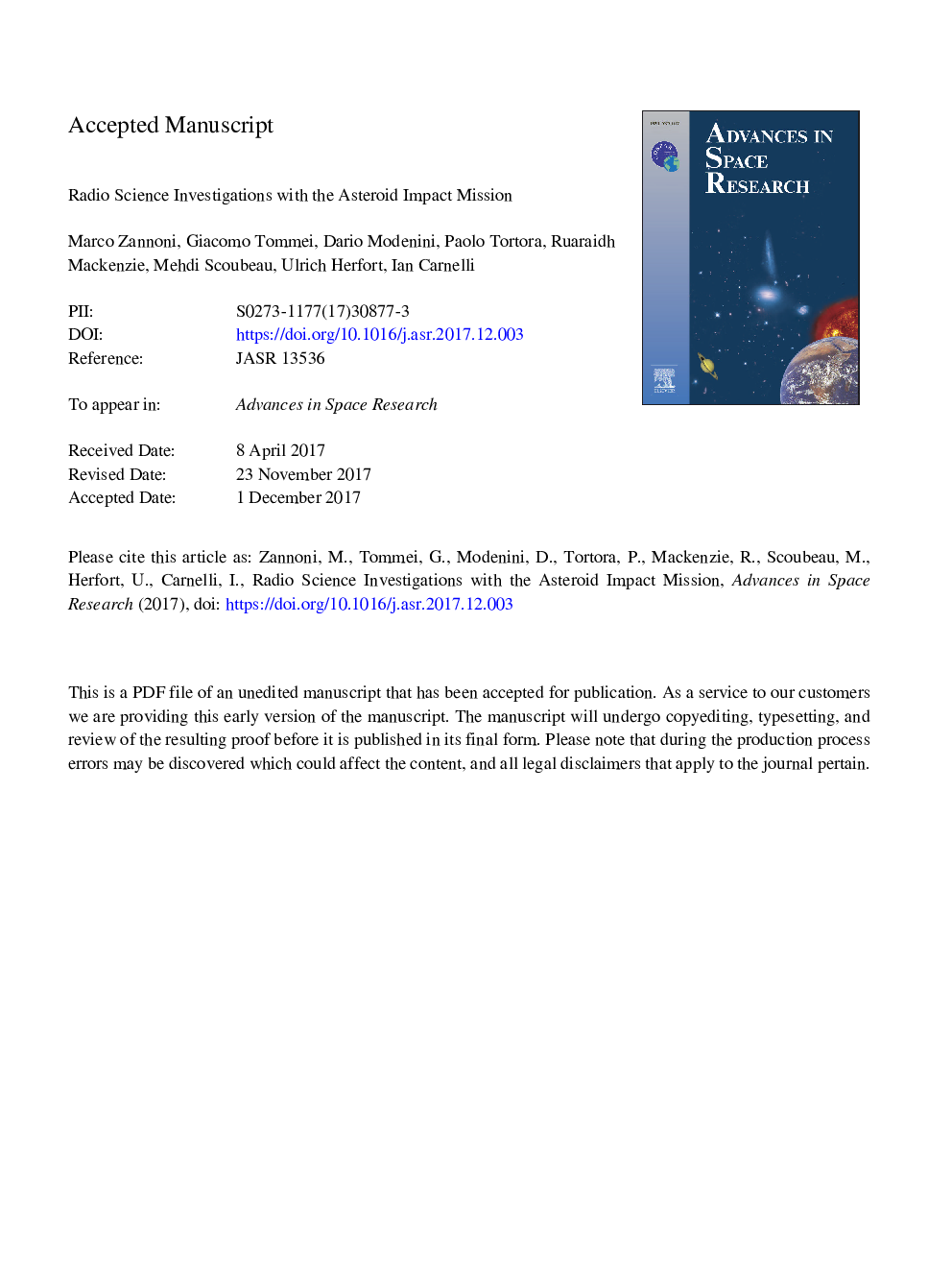| Article ID | Journal | Published Year | Pages | File Type |
|---|---|---|---|---|
| 10156412 | Advances in Space Research | 2018 | 28 Pages |
Abstract
Given the small mass of the Didymos system, optical navigation images proved to be crucial to obtain good accuracies for the scientific parameters of interest, even keeping AIM at relatively large distances from Didymos. At 10â¯km, after 8 flybys dedicated to gravity science, the masses of the primary and secondary can be estimated to about 0.2% and 1.6% (1-sigma), respectively, with the mass of the secondary being mainly given by observing the wobble of the primary around the common center of mass due to the mutual orbital motion; the orbital motion of the secondary around the primary can be estimated to about 1â¯m, and the pole orientation of the primary and the secondary can be estimated to about 0.1â¯deg and 0.4â¯deg, respectively (1-sigma).
Related Topics
Physical Sciences and Engineering
Earth and Planetary Sciences
Space and Planetary Science
Authors
Marco Zannoni, Giacomo Tommei, Dario Modenini, Paolo Tortora, Ruaraidh Mackenzie, Mehdi Scoubeau, Ulrich Herfort, Ian Carnelli,
